Why you can trust Tom's Hardware
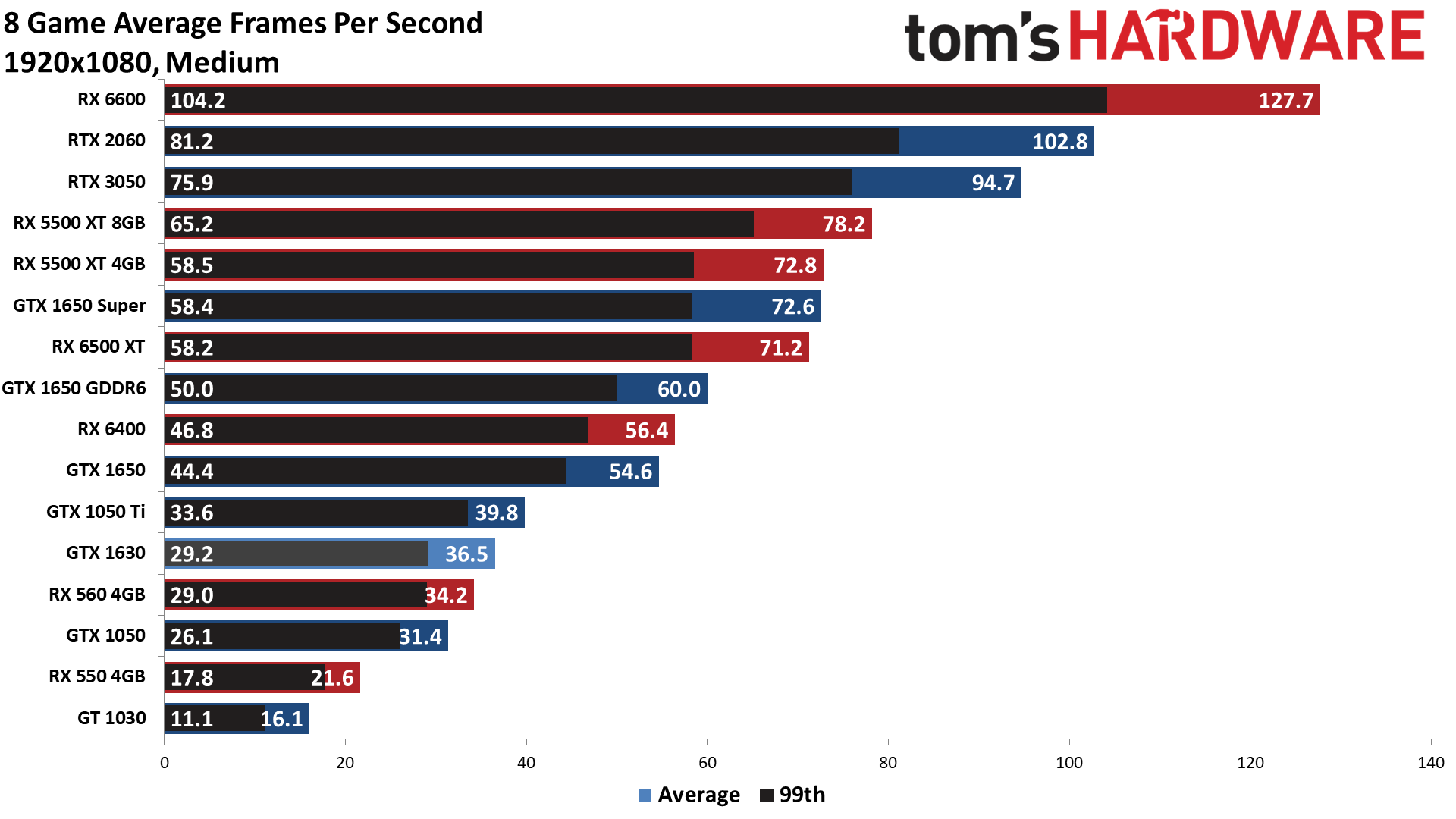
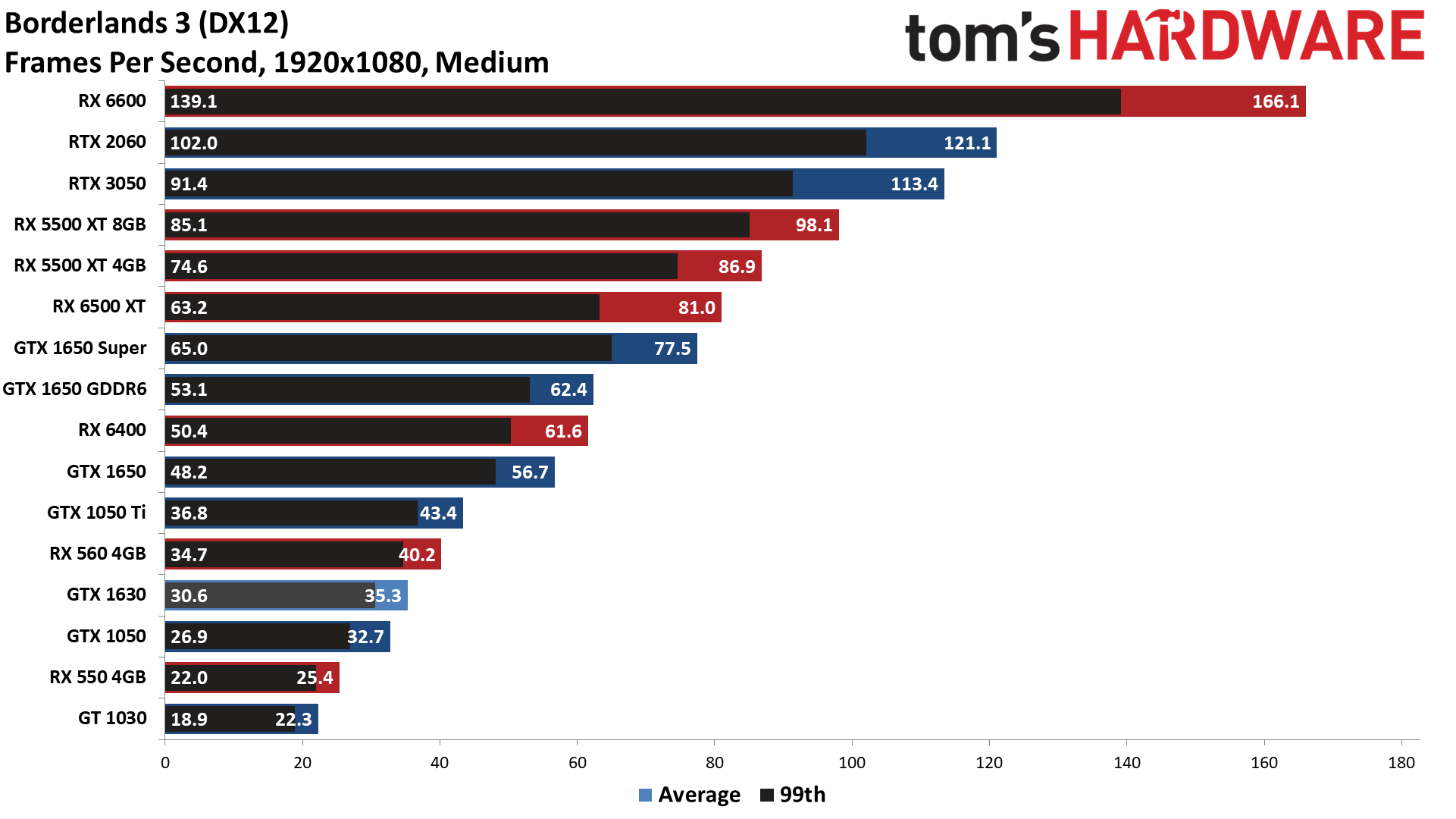
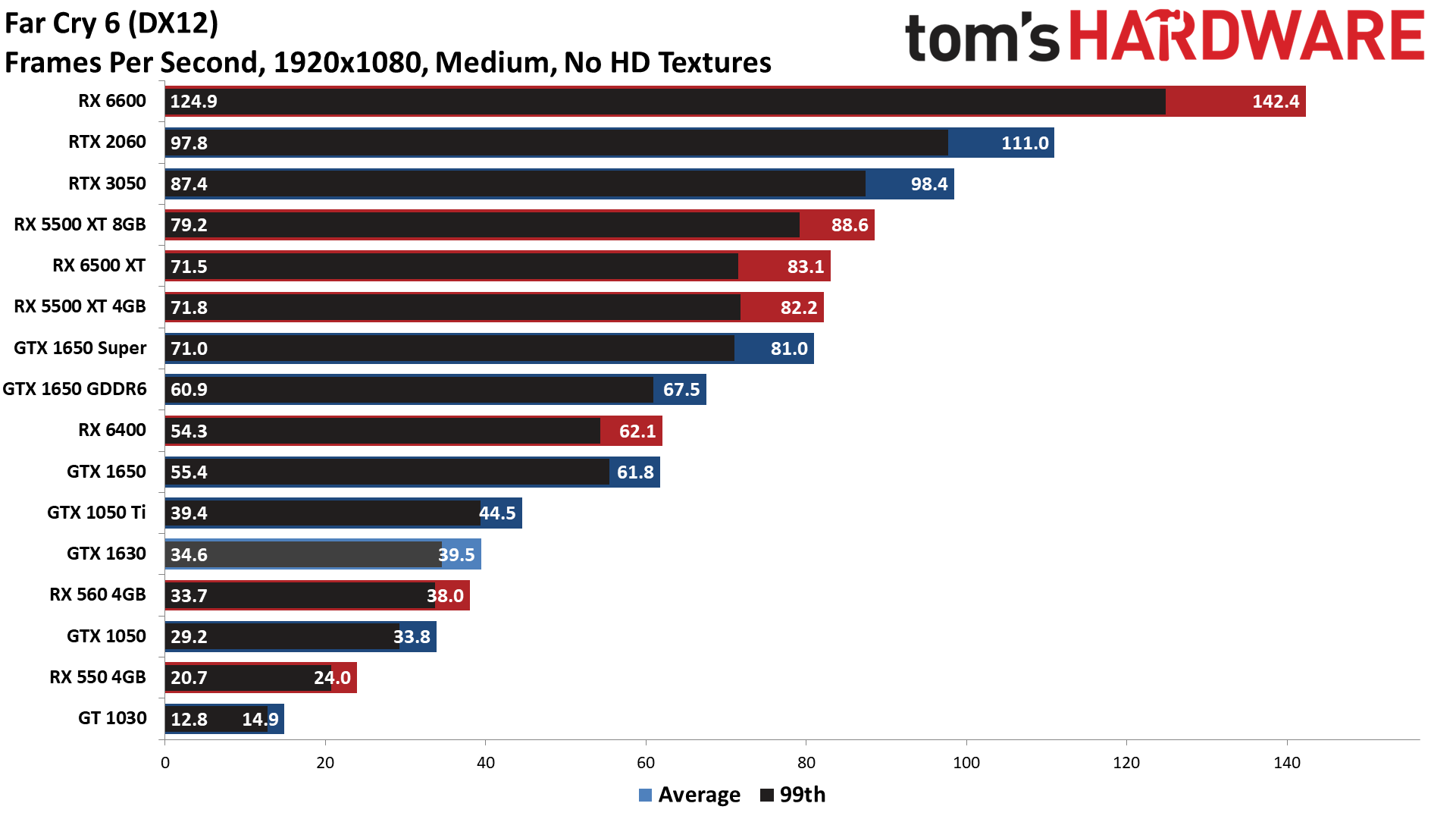
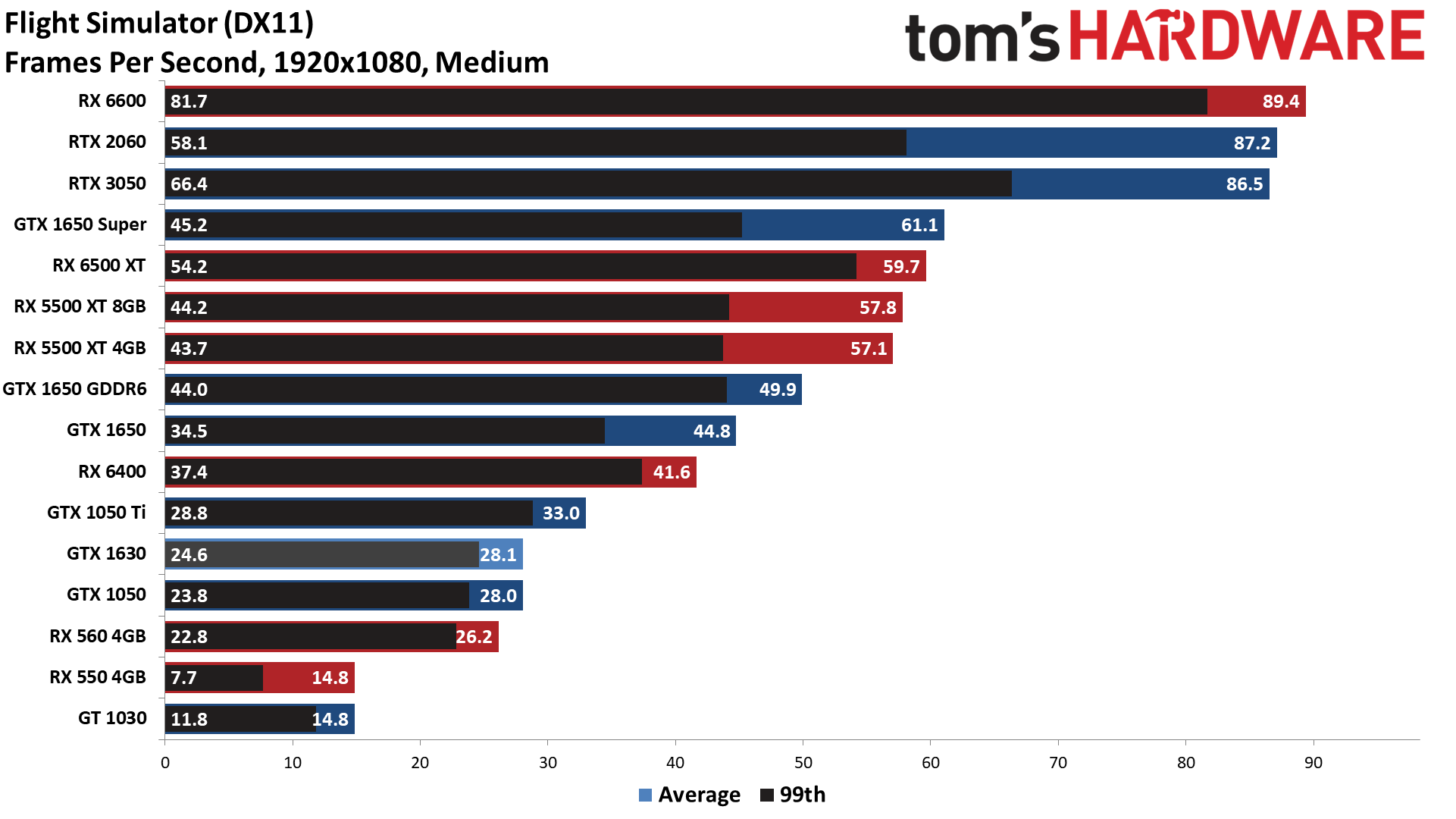
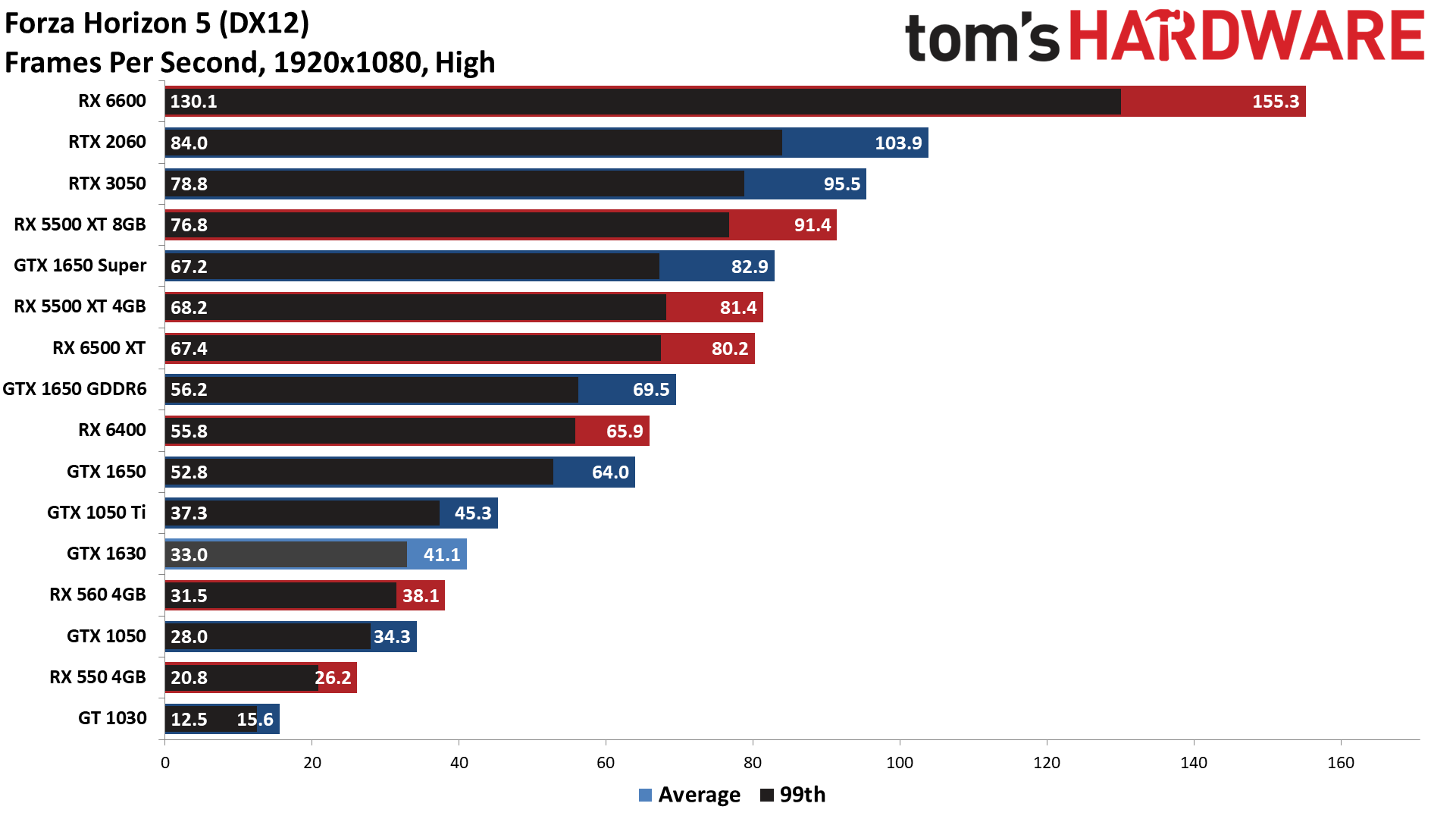
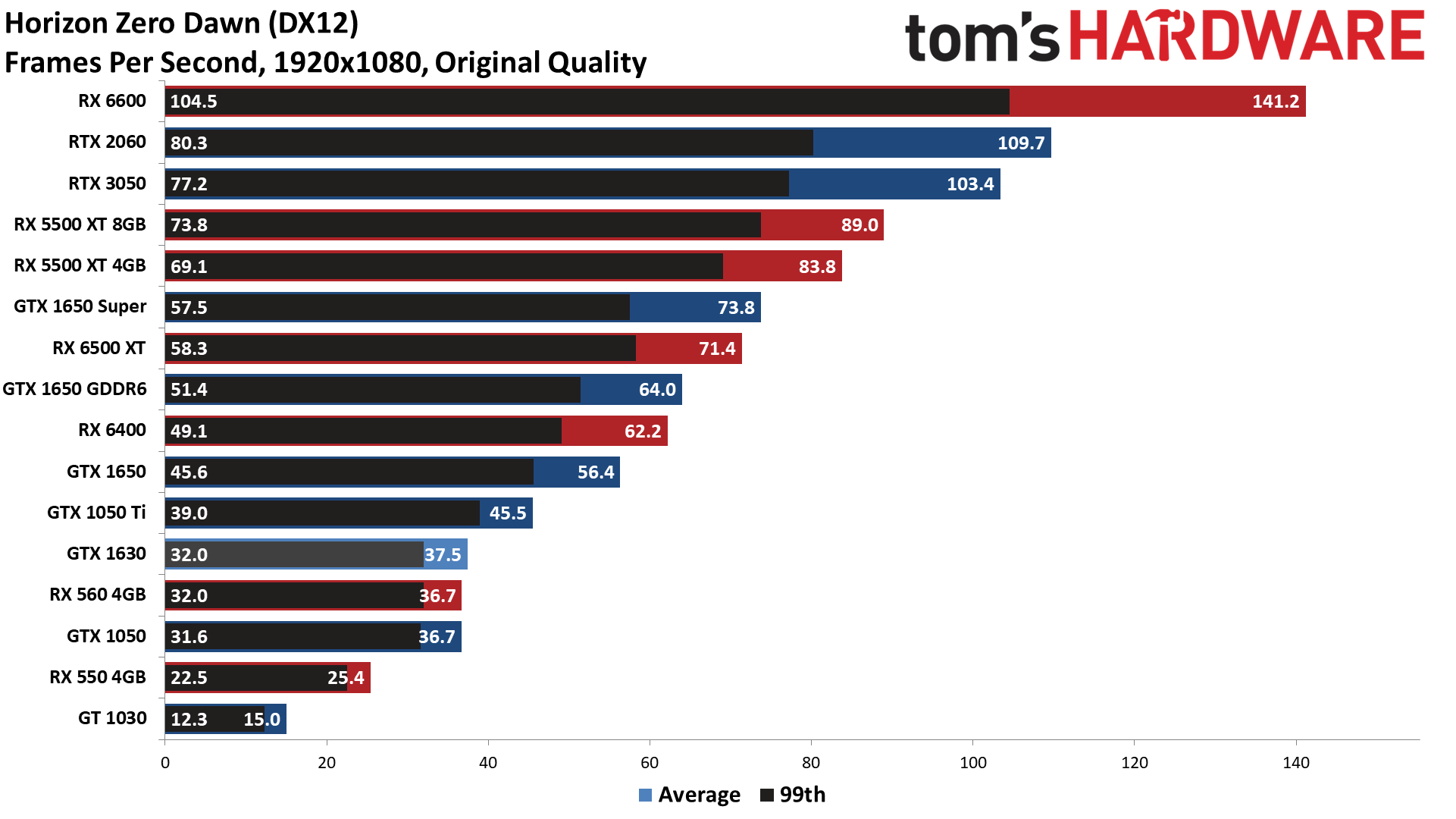
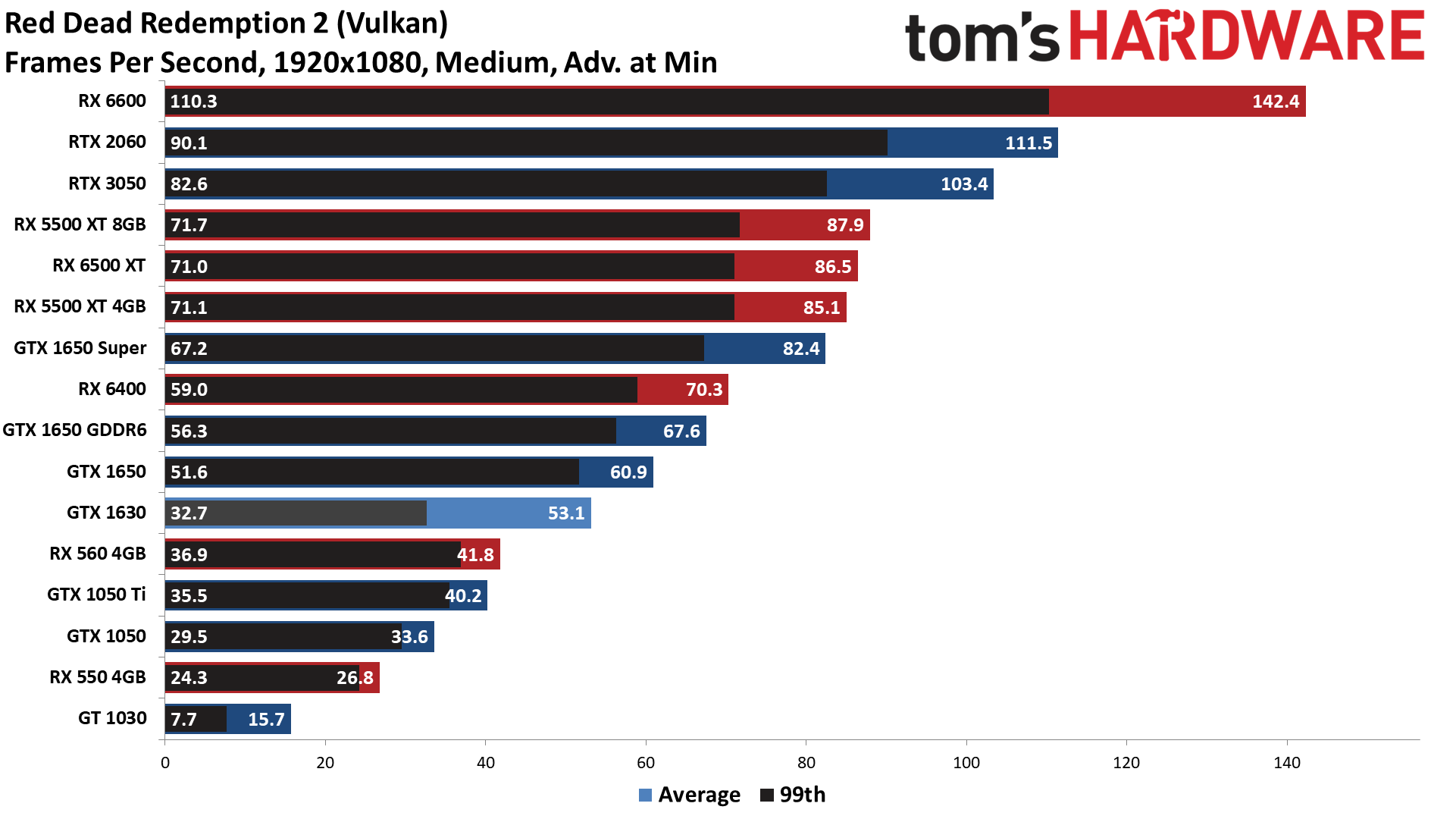
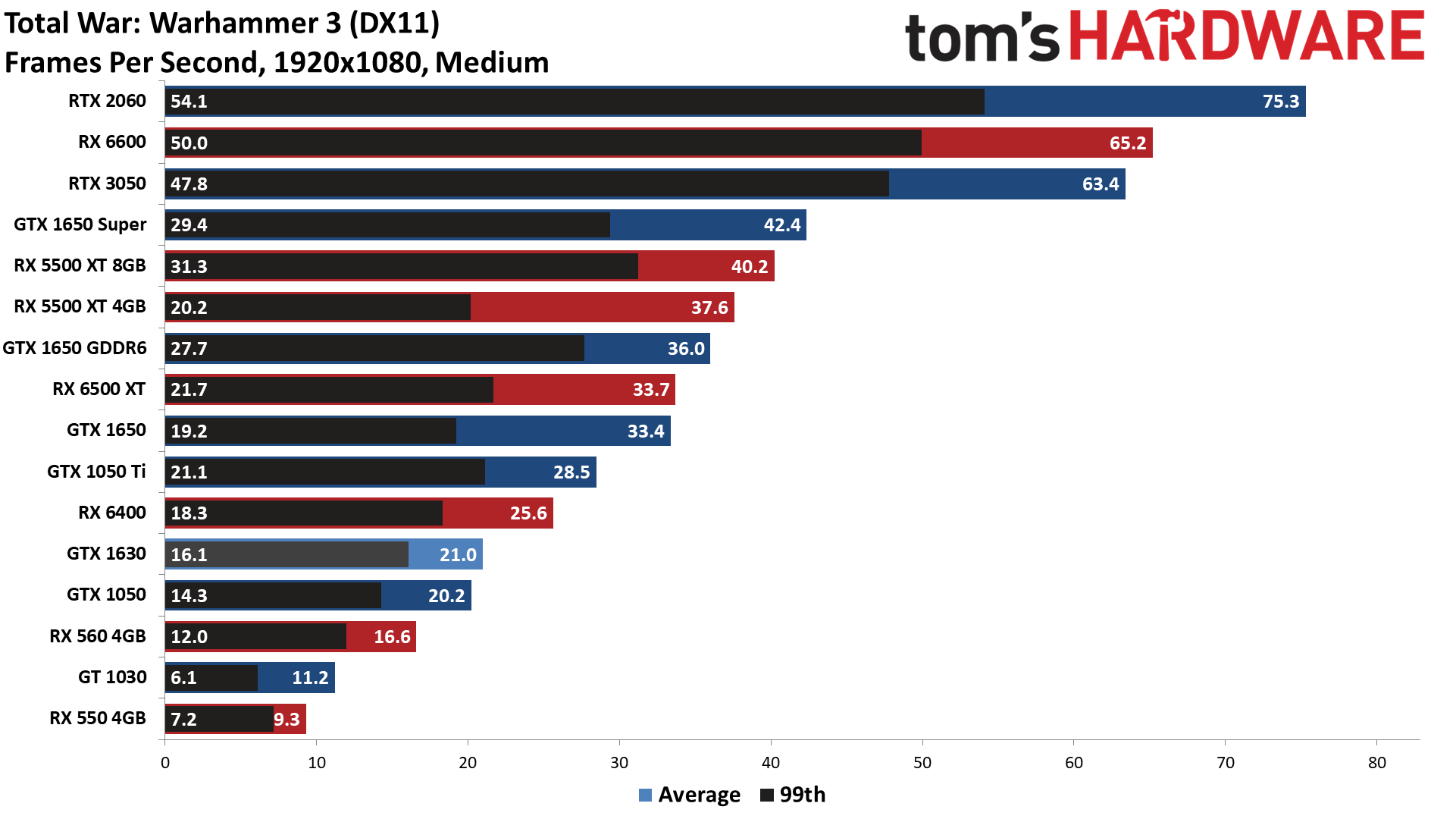
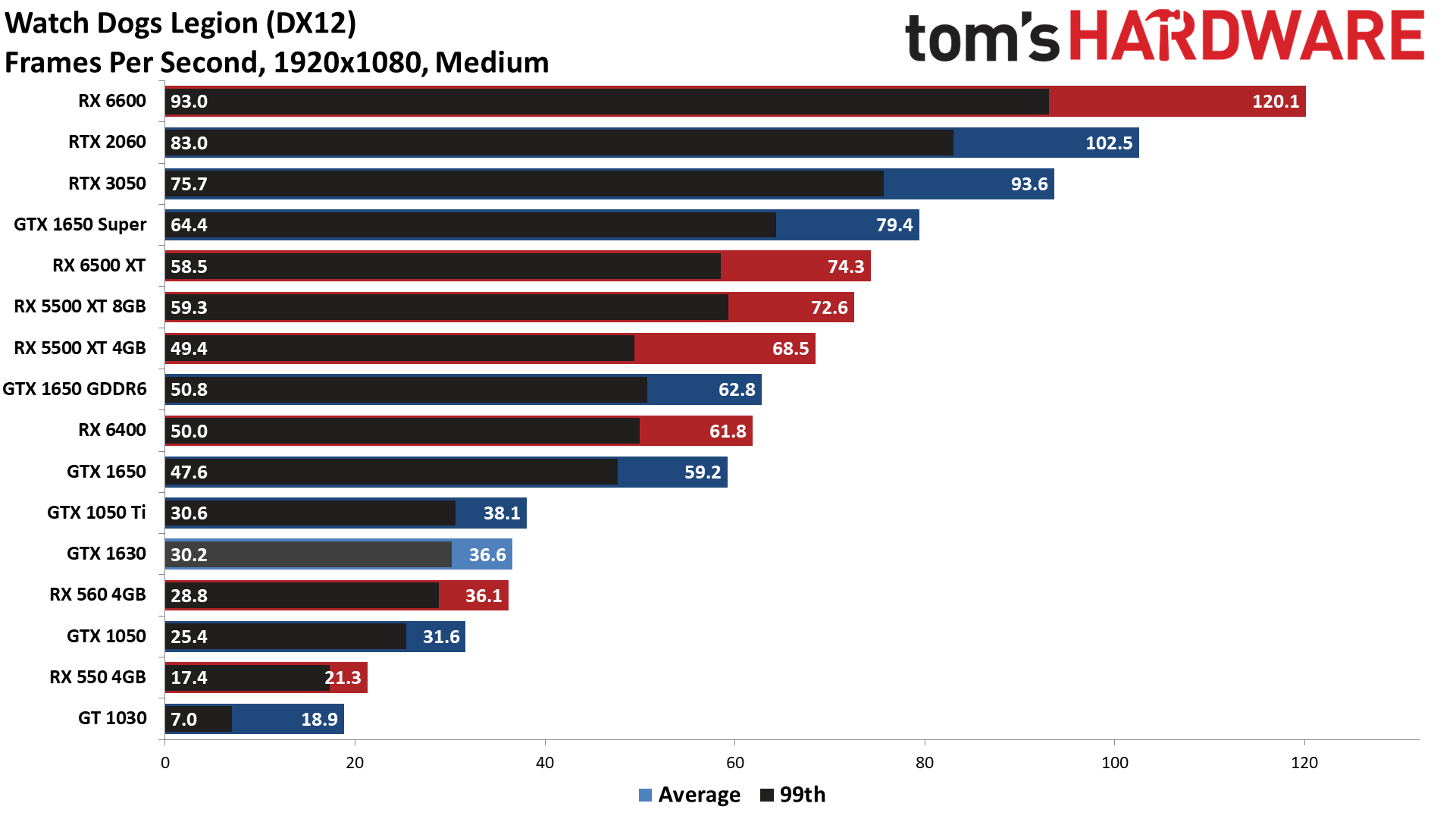
The GTX 1630 really only makes sense at 1080p low to medium settings, maybe high settings in lighter games. You can see by the overall average of just 36.5 fps that it's not going to win any performance awards.
But it does manage to beat the GTX 1050, which launched with a price of $110 back in 2016, and of course the GT 1030. It also beats the RX 560 4GB, and by extension the RX 550 4GB. Again, those were generally sub-$100 cards when they launched. On the other hand, it fails to beat the GTX 1050 Ti, a $140 card from 2016 with similar video encoding hardware.
In the individual games, nearly all of the games we tested at 1080p medium remained playable, breaking 30 fps. Flight Simulator came up just a hair short at 28 fps, but it's still playable at that speed, while Total War: Warhammer 3 fell far short of the 30 fps mark and averaged just 21 fps.
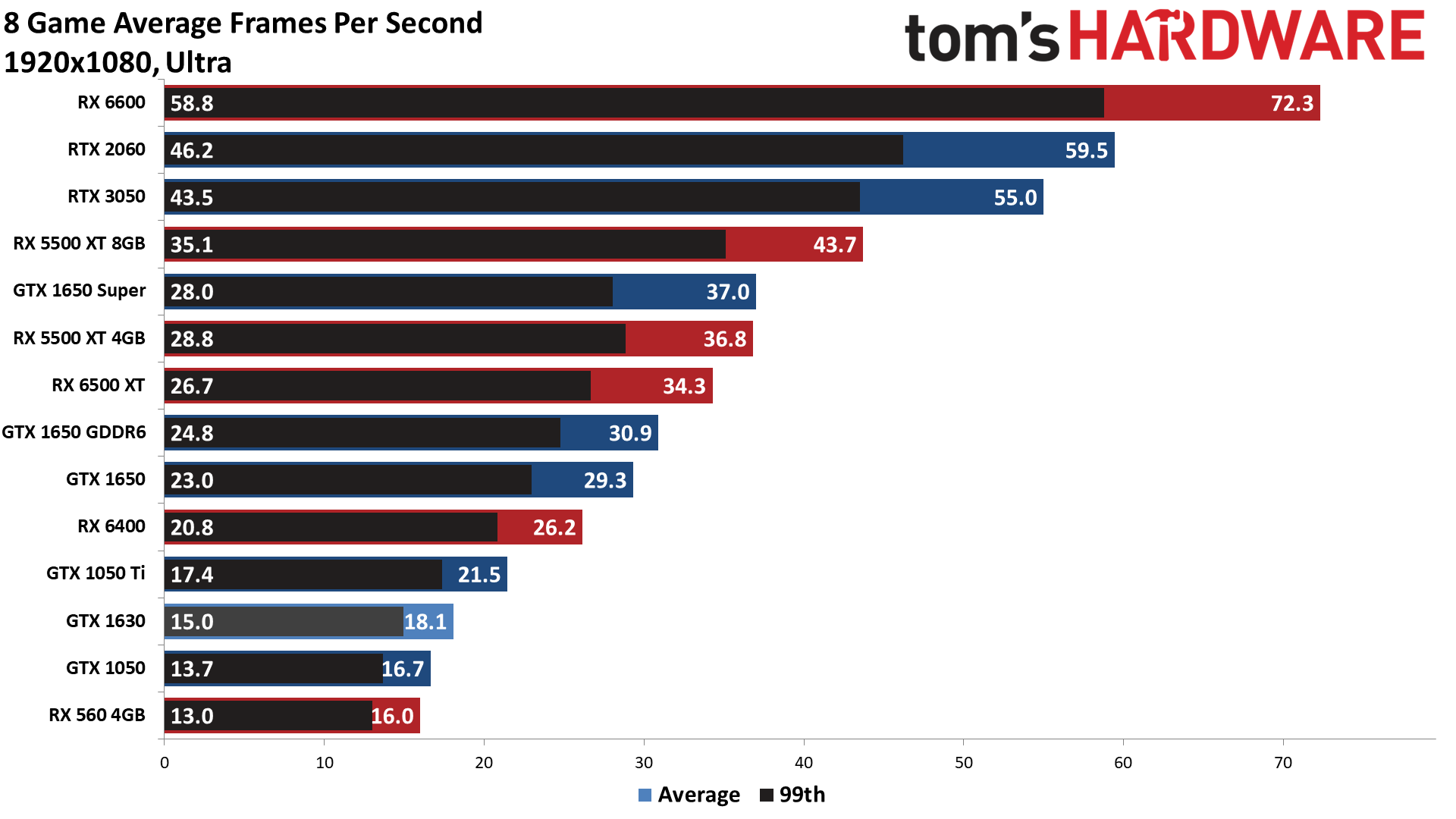
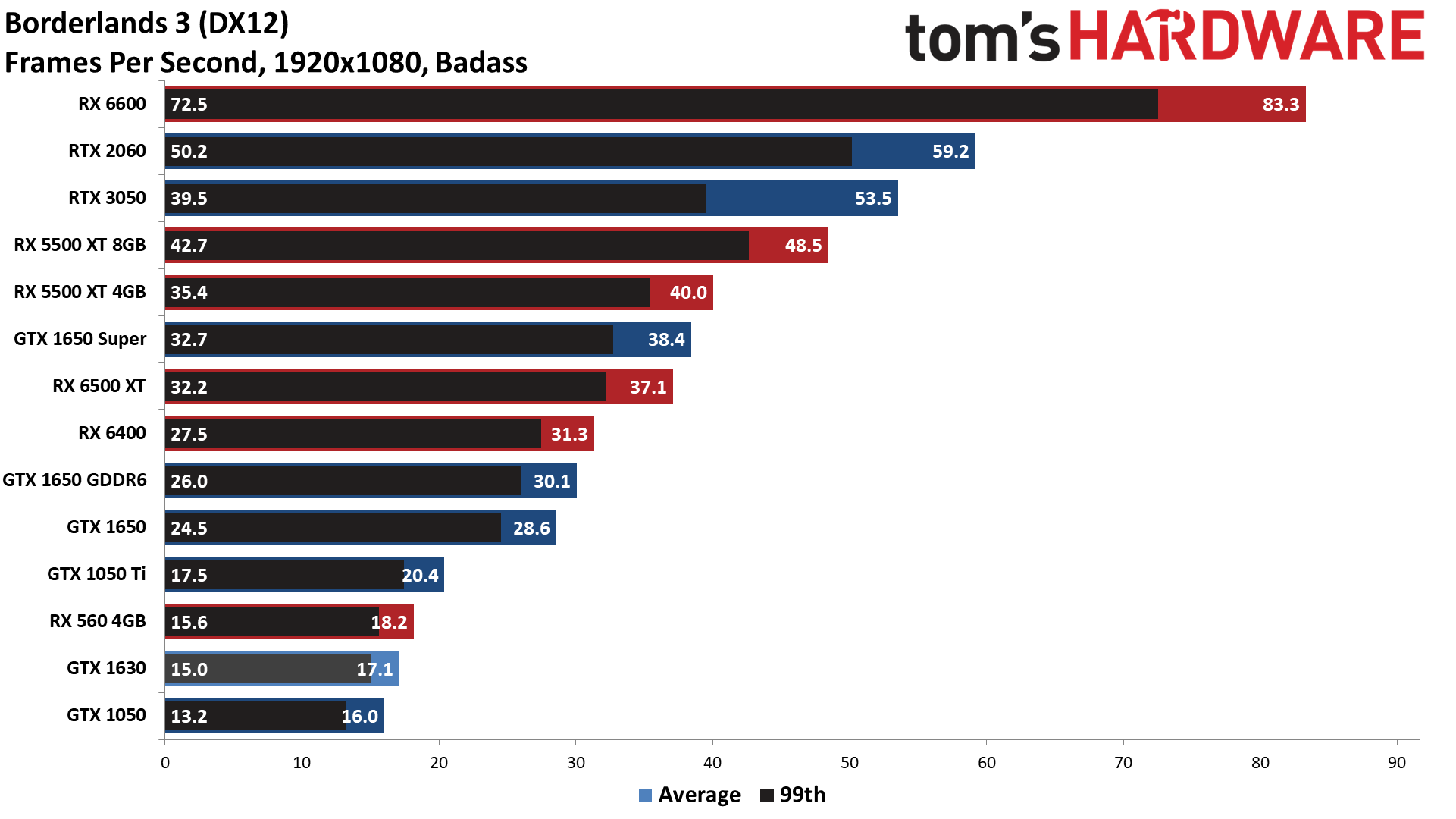
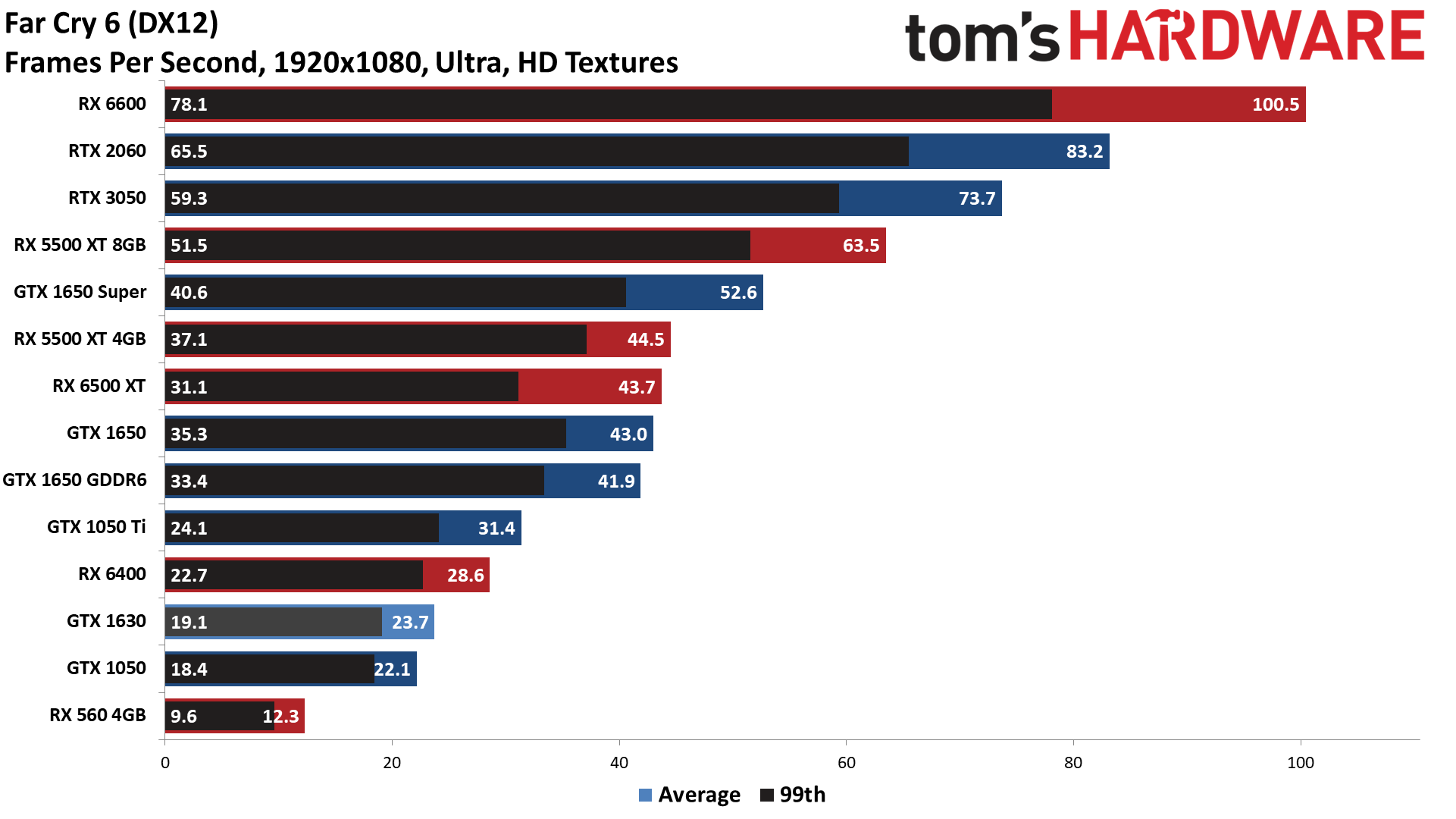
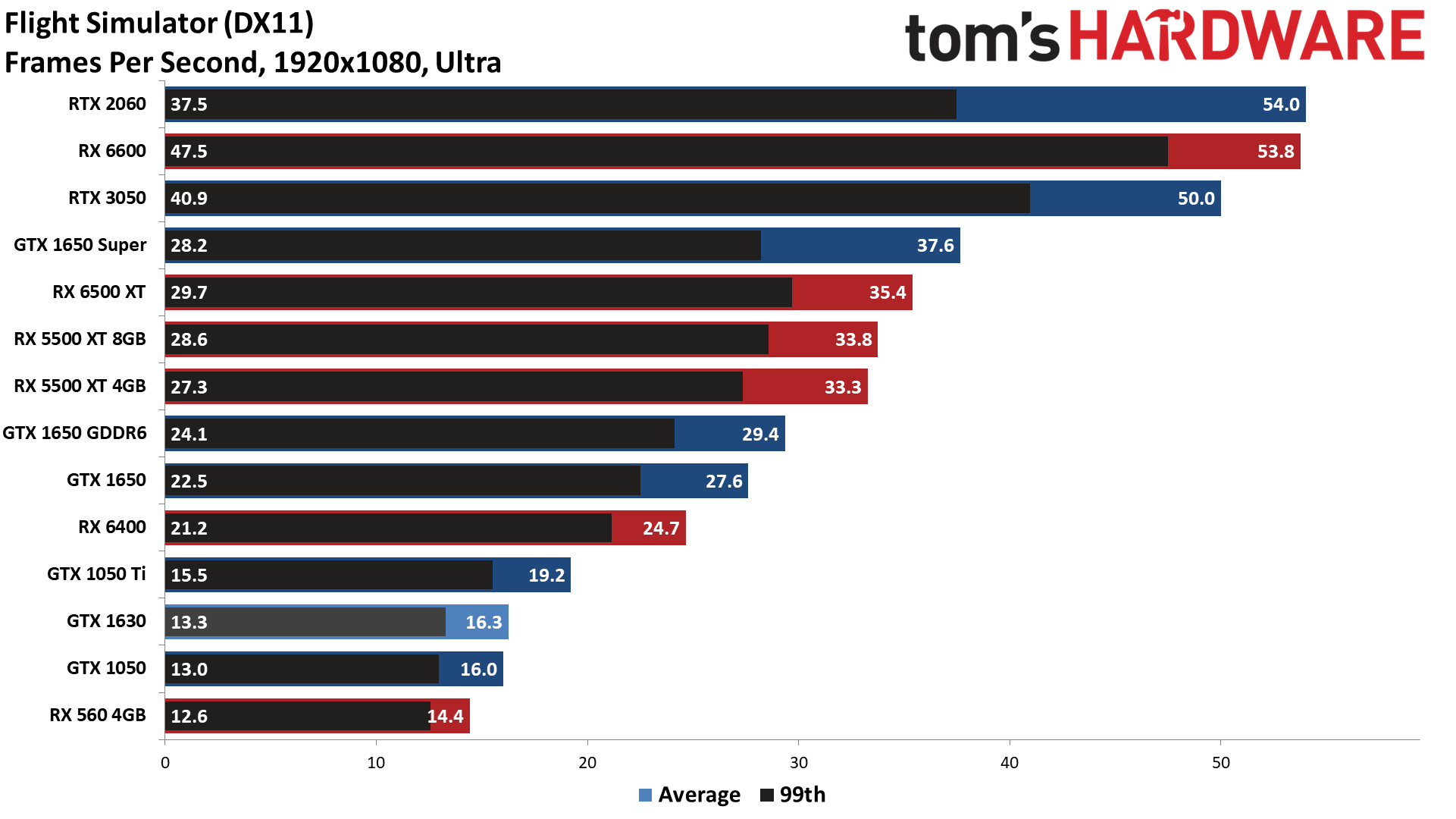
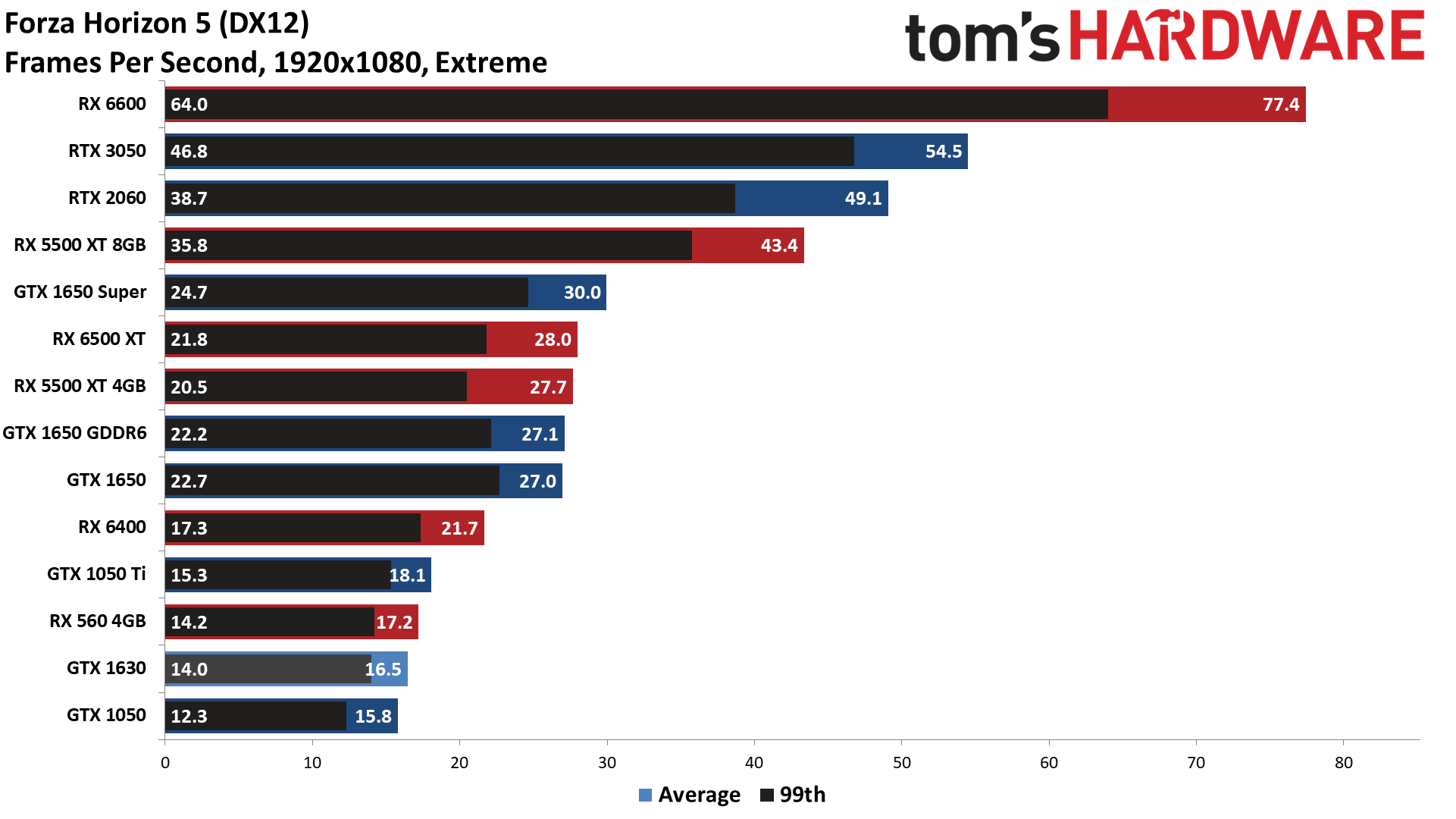
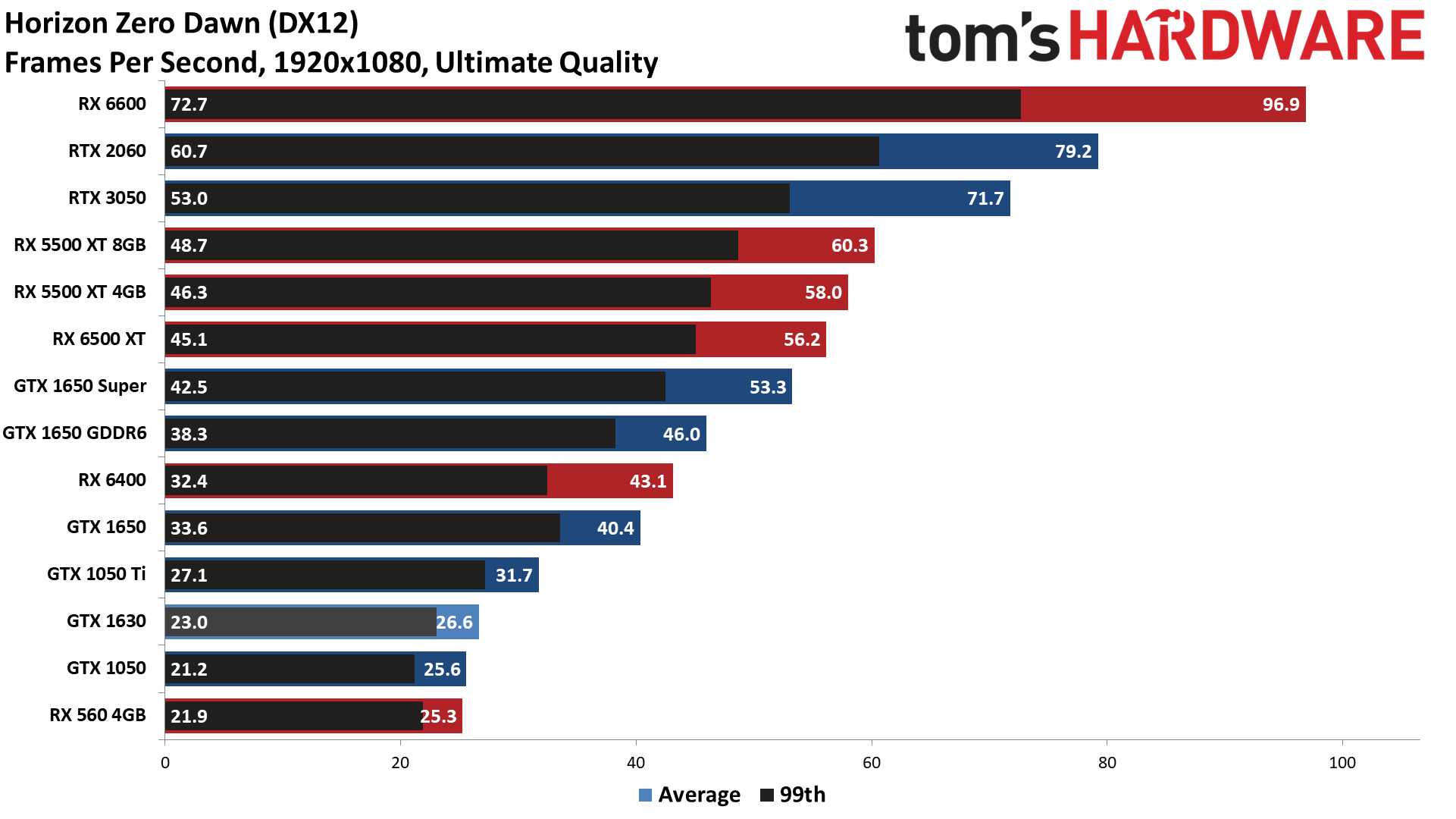
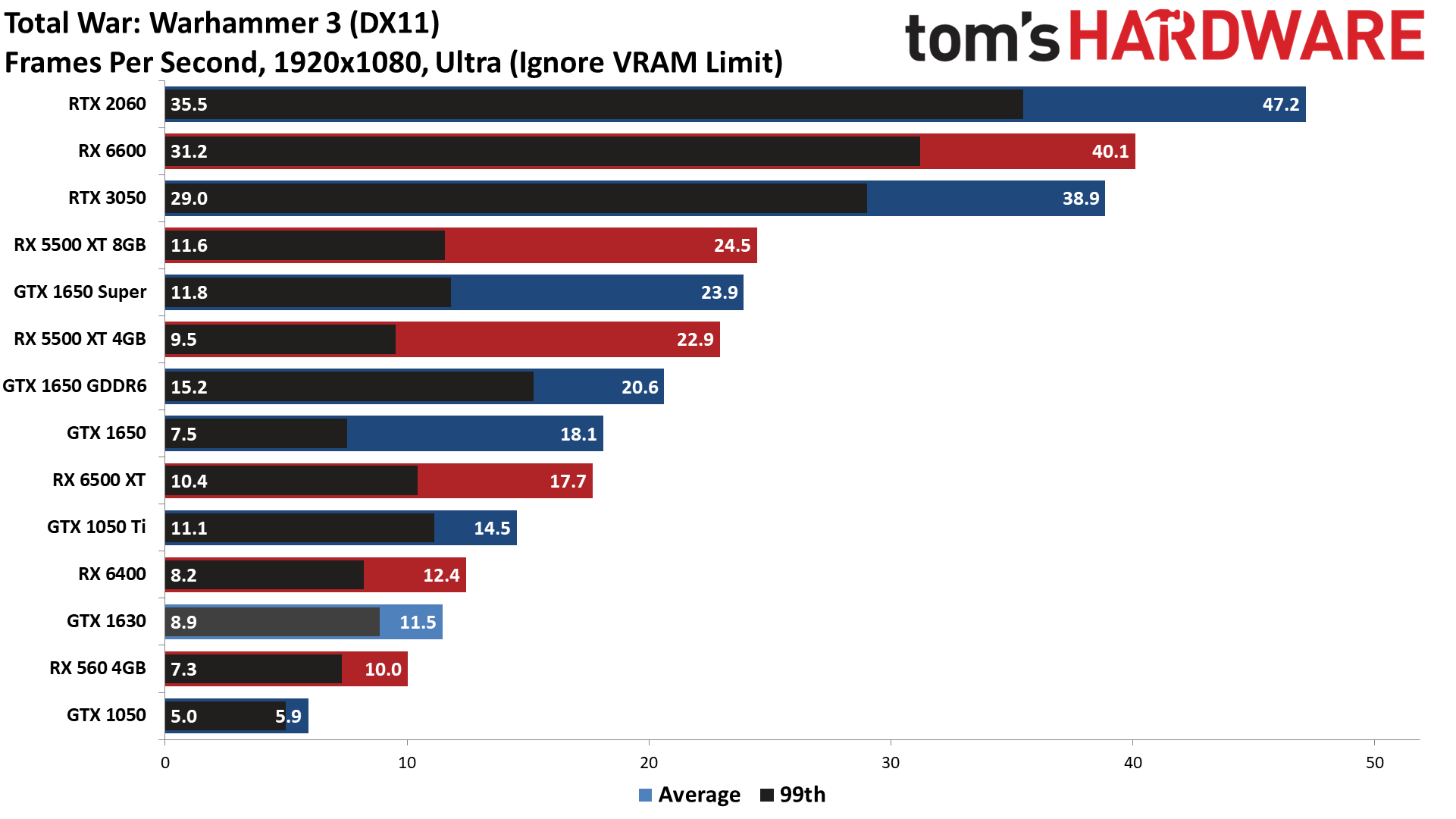
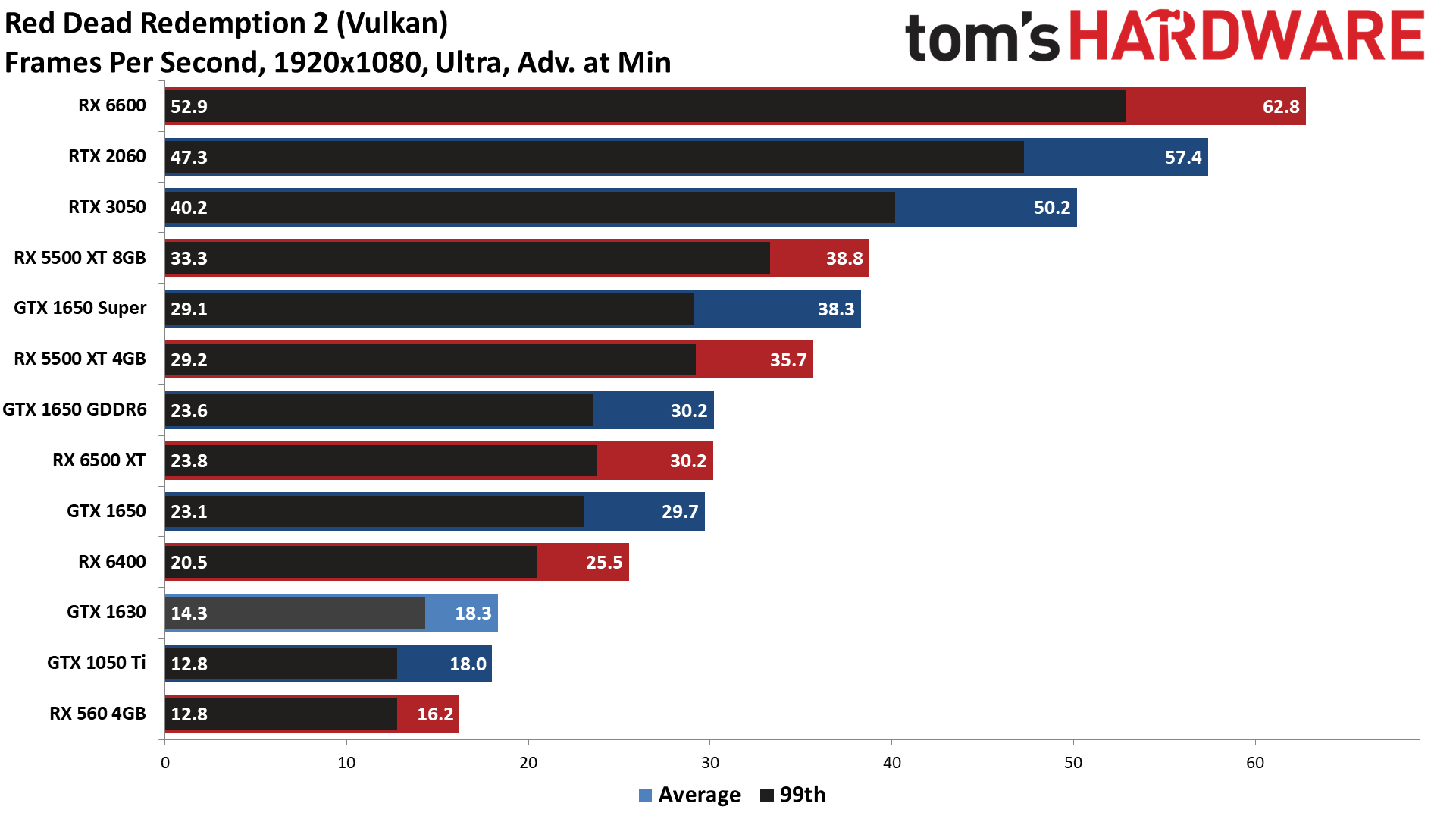
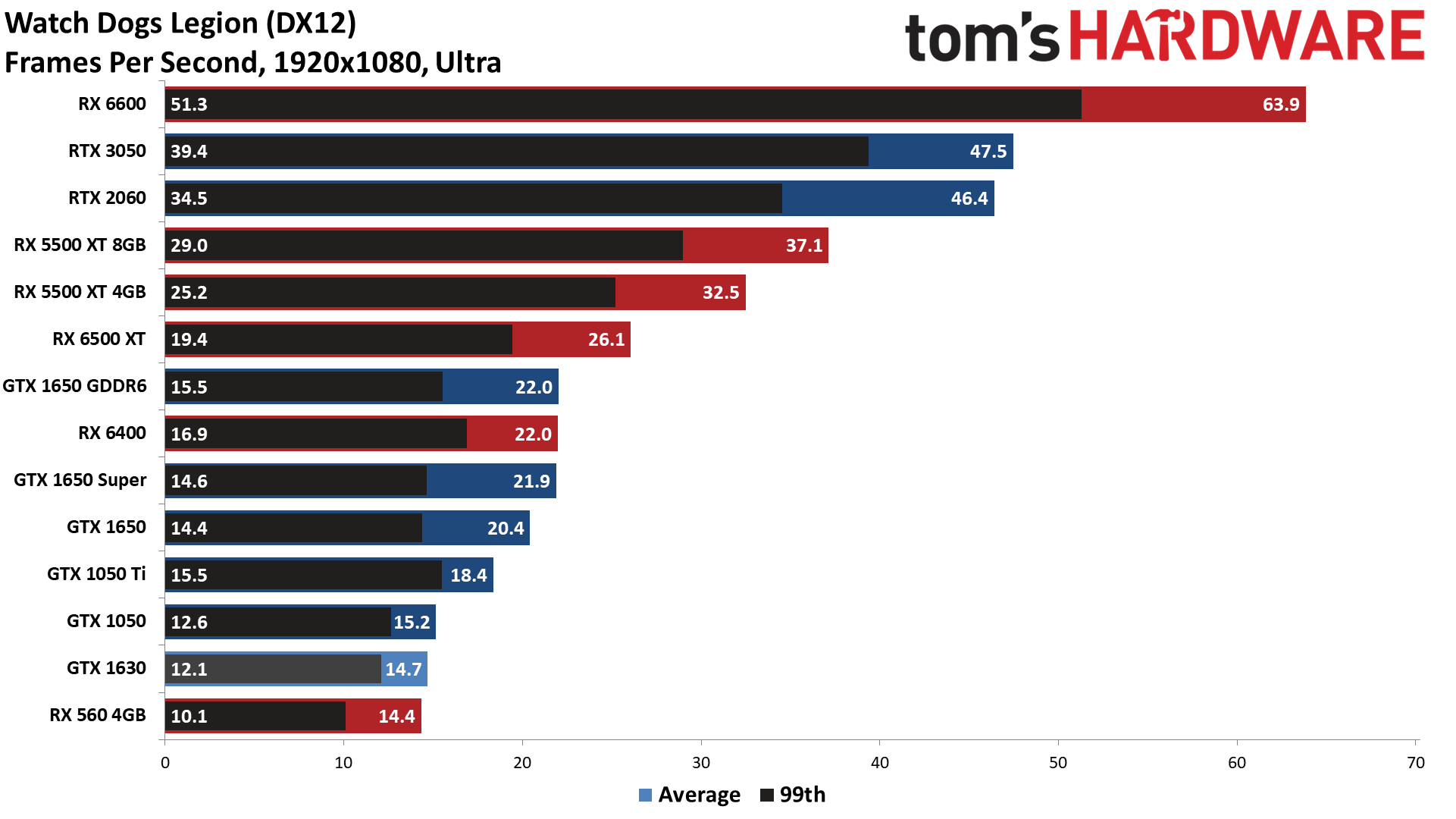
As you can guess from the 1080p medium results, bumping the quality up to 1080p ultra generally exceeds the capabilities of the GTX 1630. Average performance across the eight tested games was just 18 fps, and there wasn't a single game that broke the 30 fps mark.
Some of that might be due to only having 4GB VRAM, but the 64-bit memory interface and lack of bandwidth are also a problem. The GTX 1650 and 1650 Super also have 4GB VRAM, but they delivered mostly playable 1080p ultra results, outside of a few games.
But we're not suggesting anyone buy a 4GB card with the intent of playing games at ultra quality settings. More and more titles are pushing beyond 4GB, even at 1080p, and the days of such GPUs are limited., which is the big problem with the GTX 1630, as it's already near the bottom of the performance ladder and clearly doesn't have any legs left.
- MORE: Best Graphics Cards
- MORE: GPU Benchmarks and Hierarchy
- MORE: All Graphics Content
Get Tom's Hardware's best news and in-depth reviews, straight to your inbox.
Current page: Colorful GeForce GTX 1630 Gaming Performance
Prev Page Test Setup for GeForce GTX 1630 Next Page Colorful GeForce GTX 1630: Power, Temps, Noise, Etc.
Jarred Walton is a senior editor at Tom's Hardware focusing on everything GPU. He has been working as a tech journalist since 2004, writing for AnandTech, Maximum PC, and PC Gamer. From the first S3 Virge '3D decelerators' to today's GPUs, Jarred keeps up with all the latest graphics trends and is the one to ask about game performance.
-
King_V Upon reading this review, I feel that I owe you an apology for being such a proponent for the GPU Battle of Meh...Reply
Uh, but, I guess it's better than the 1050 non-Ti, so, uh, that's . . no, I can't even get myself to say it's some kind of victory.
My sympathies for your suffering on this one, @JarredWaltonGPU -
Eximo OEMs are still selling GTX1650 and 1650 Super in low end gaming desktops. Just don't see this happening, practically e-waste unless they cut the price in half.Reply -
PiranhaTech Reply
I don't mind weak GPUs from Nvidia or AMD as long as they are priced okay. There's been a few times where an integrated GPU doesn't work for whatever reason (for a PC not used for gaming), or my good GPU goes out, I'm short on money, and I need a working PC.King_V said:Upon reading this review, I feel that I owe you an apology for being such a proponent for the GPU Battle of Meh...
Uh, but, I guess it's better than the 1050 non-Ti, so, uh, that's . . no, I can't even get myself to say it's some kind of victory.
My sympathies for your suffering on this one, @JarredWaltonGPU
They definitely have their uses. However, come on! With that kind of performance, be $120 at most, probably $80-100. It's 75W on top of all of this. I could be more forgiving if it ran at 50W or lower. Give us something, Nvidia! The GT 1030 is a 30W GPU -
King_V Reply
Well, as predicted when the specs were announced and when the card first came out, Nvidia released a GPU that makes the RX 6400 look like a hero.PiranhaTech said:I don't mind weak GPUs from Nvidia or AMD as long as they are priced okay. There's been a few times where an integrated GPU doesn't work for whatever reason (for a PC not used for gaming), or my good GPU goes out, I'm short on money, and I need a working PC.
They definitely have their uses. However, come on! With that kind of performance, be $120 at most, probably $80-100. It's 75W on top of all of this. I could be more forgiving if it ran at 50W or lower. Give us something, Nvidia! The GT 1030 is a 30W GPU -
waffleinc When I first heard about this GPU, I was somewhat excited. At the time, I needed a cheap and cheerful GPU for nothing more than basic home use and video encoding. I figured that as long as it's only $100, that would be fine, even with the low core count and slow memory. Then I saw that it would be $200 and 75w. Yeah, no thanks.Reply -
Giroro What version of NVENC does it have?Reply
I assume the older/worse version of the GTX 1650... If so, I wouldn't even want this for $100... Maybe $80.
With the updated encoders, I could see myself paying nearly $125 as an entry point to throw my old 3700x into a dedicated streaming PC.
But today Newegg has a 1660 Super for $210 ($30 MIR), and you can get an RTX 2060 for $250 (which also completely embarrasses the pricing of the RTX 3050).
Nvidia needs to step back get real with how they're letting their board partners price their crappy new cards. -
JarredWaltonGPU Reply
I'm still waiting for the "joy" of testing Arc A380. I mean, technically it should perform pretty decently based on specs. But I am not at all looking forward to the driver shenanigans I'll likely have to deal with. On the bright side, it's taken so long to get the GPU shipped from China that drivers will hopefully be quite a bit better by the time the card arrives! Also, AV1 encoding should be interesting, assuming it works properly. I'll try to encode and upload the A380 video using its AV1 hardware. 🙃King_V said:Upon reading this review, I feel that I owe you an apology for being such a proponent for the GPU Battle of Meh...
Uh, but, I guess it's better than the 1050 non-Ti, so, uh, that's . . no, I can't even get myself to say it's some kind of victory.
My sympathies for your suffering on this one, @JarredWaltonGPU -
Thunder64 The article basically says "Don't buy this crap" and yet 2/5 stars. What is a one star product? This costs the same as much better cards and still requires external power.Reply
Giroro said:What version of NVENC does it have?
I assume the older/worse version of the GTX 1650... If so, I wouldn't even want this for $100... Maybe $80.
With the updated encoders, I could see myself paying nearly $125 as an entry point to throw my old 3700x into a dedicated streaming PC.
But today Newegg has a 1660 Super for $210 ($30 MIR), and you can get an RTX 2060 for $250 (which also completely embarrasses the pricing of the RTX 3050).
Nvidia needs to step back get real with how they're letting their board partners price their crappy new cards.
Or for $10 more on Amazon you could get an RX 6600. That would have a bit more performance but more importantly 8GB of RAM.
JarredWaltonGPU said:I'm still waiting for the "joy" of testing Arc A380. I mean, technically it should perform pretty decently based on specs. But I am not at all looking forward to the driver shenanigans I'll likely have to deal with. On the bright side, it's taken so long to get the GPU shipped from China that drivers will hopefully be quite a bit better by the time the card arrives! Also, AV1 encoding should be interesting, assuming it works properly. I'll try to encode and upload the A380 video using its AV1 hardware. 🙃
How are you even going to review it? Intel should betting more flak about having to put games into "tiers". Do you separate your review by tier? The conclusion could be quite different depending on what you intend to play. -
missingxtension This is just a slap in the face, so disrespectful. Rx6400 was so disrespectful, then Nvidia comes and "hold ny beer".Reply
I am waiting to see if Intel at least ca do something reasonable for the price, I just can't see Intel being good at pricing. But this guys here make em look like the value leader. Wait till the recession and shrinking computer market comes, they are trying to cause it. -
hannibal Nvidia knows exactly how fast (slow) this GPU is! When this is $199, just ques how much more faster GPUs are gonna cost!Reply
4050 should cost douple of this gpu so $400 and that still makes 4050 to look good compared to this gpu.
The GPU price hike is not over, at least according the Nvidia!